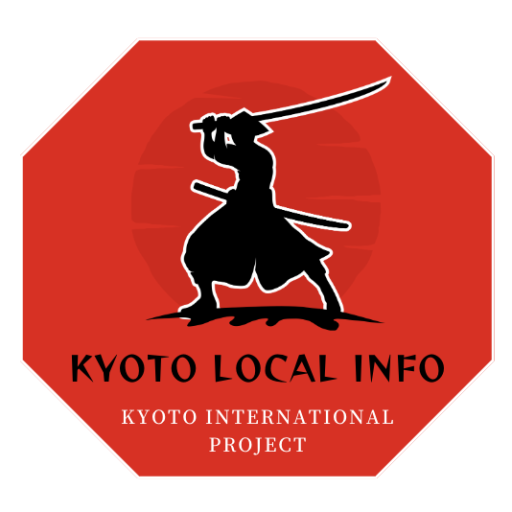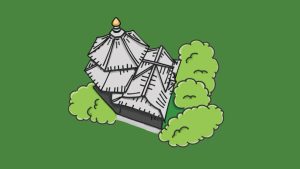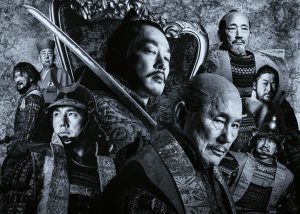The History of Kyoto and Nakagyo Ward: The End of the Edo Period Part 3 - "Birth of the Shinsengumi"
(Previously on) With the signing of the "Treaty of Amity and Commerce between the United States and Japan," trade with foreign countries began, dealing a heavy blow to the textile industry in Kyoto's Nishijin district. This led to numerous incidents of violence against foreign traders. Additionally, the arrival of many loyalists to the Emperor and opponents of foreign influence in Kyoto exacerbated the deterioration of public order.
The radical activists of the Sonnō jōi faction who came to Kyoto engaged in activities such as assassination and robbery, exacerbating the serious problem of deteriorating public order. In response, the shogunate established the position of "Kyoto Shugoshoku" (Governor of Kyoto) to maintain public order. Matsudaira Katamori, the lord of Aizu (in present-day Fukushima Prefecture), was appointed as the Kyoto Shugoshoku, and his headquarters (lodgings) were set up at Kinkaku-ji Temple in Sakyo Ward.
The Kyoto Shugoshoku took control of the Kyoto Bugyosho (office overseeing Kyoto) and Kyoto Machi Bugyo (magistrate of Kyoto) who were originally responsible for maintaining public order in Kyoto, as well as the newly organized Kyoto Mimawari-gumi (a security organization formed by shogunate retainers to maintain public order in Kyoto). However, as these, along with the Aizu domain, were not enough to handle the situation, the shogunate placed the Shinsengumi under its control to assist in maintaining public order.
The Birth of the Shinsengumi
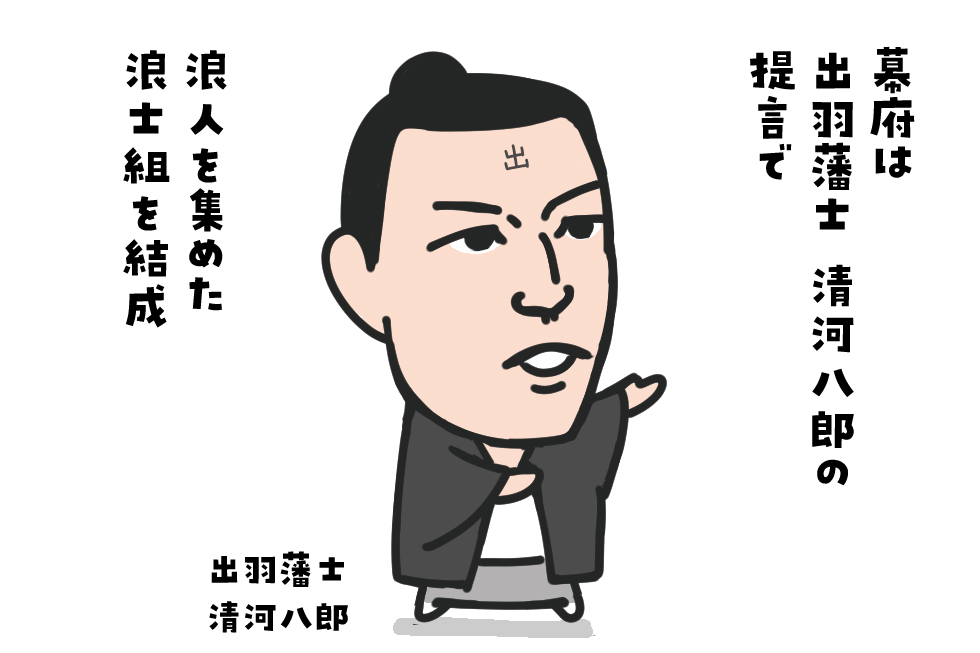
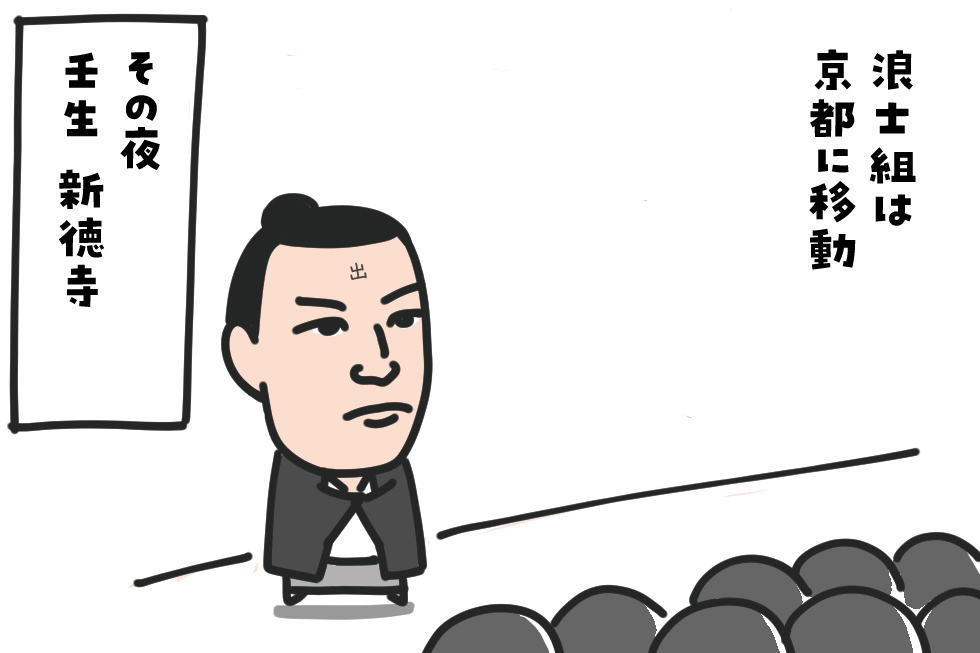
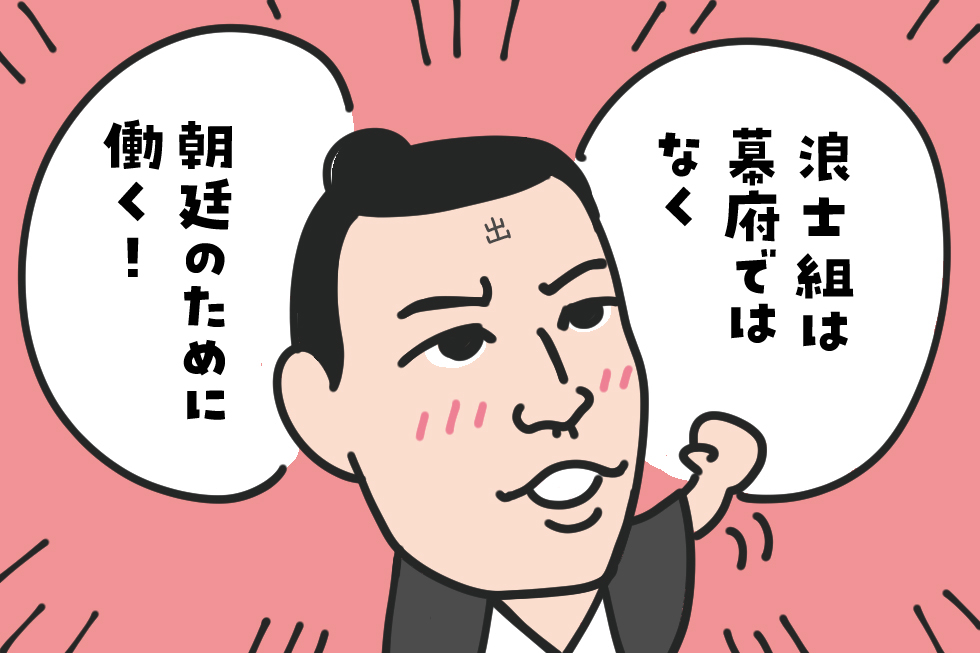
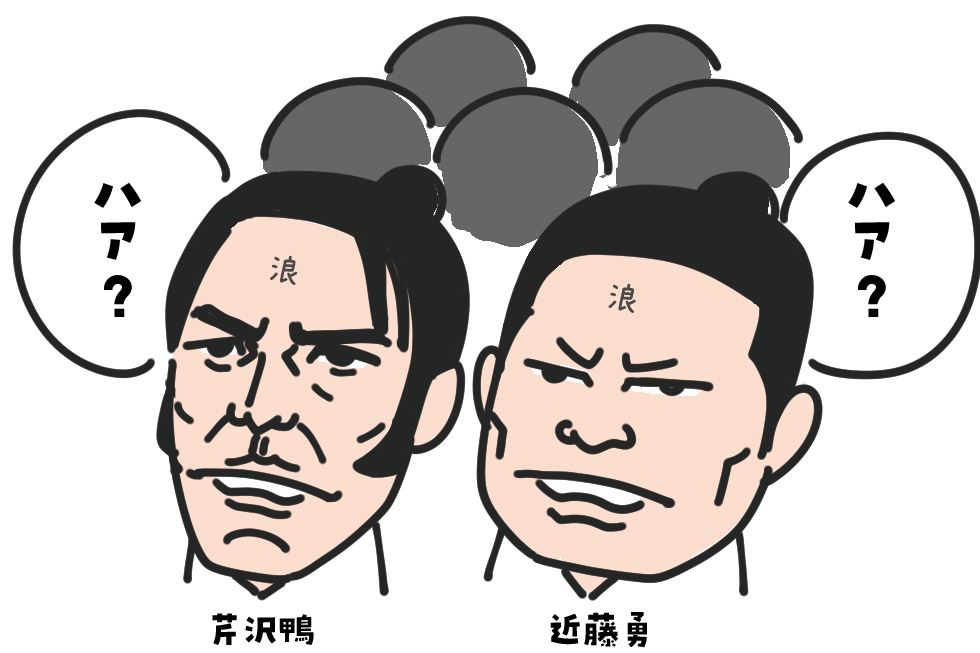
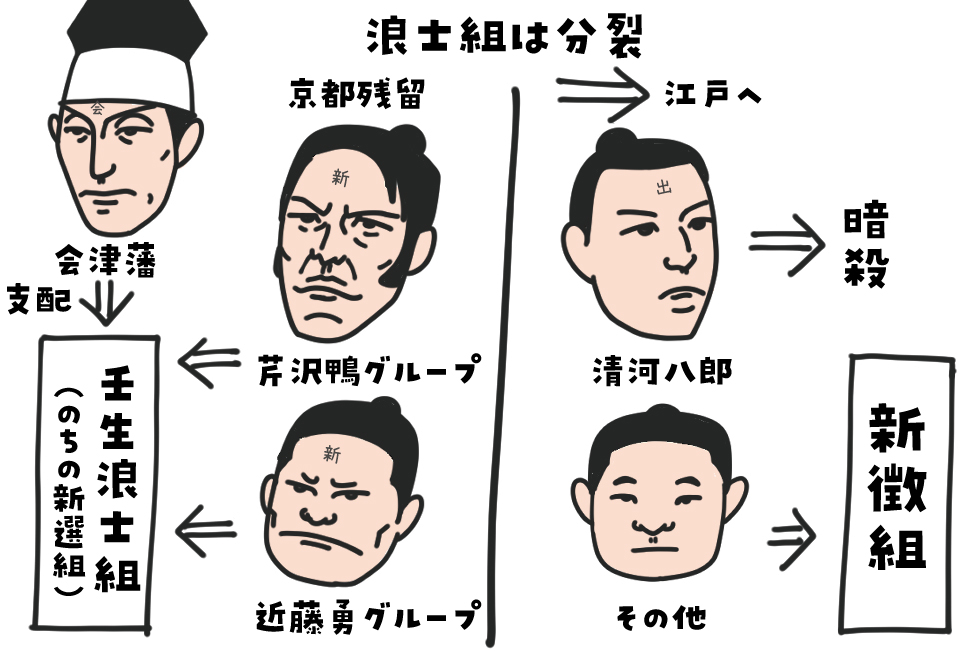
The Formation of the Shinsengumi
Upon the suggestion of Shimokitazawa Shirō, a samurai from Shōnai (present-day Yamagata Prefecture), the shogunate recruited rōnin (masterless samurai) to protect the Shogun during his journey to Kyoto.
About 200 rōnin, gathered under the banner of the "Rōshigumi," headed to Kyoto ahead of the Shogun's arrival. Upon reaching Kyoto, they lodged in houses and temples in the Minami-mura district (present-day Nakagyo Ward).
That night, Shimokitazawa gathered prominent members of the Rōshigumi at Shin-Daikōji Temple (located in Nakagyo Ward) and revealed that the true purpose of the Rōshigumi was not to serve the shogunate but to pledge allegiance to the Emperor.
This revelation led to a rift within the Rōshigumi, particularly among members led by Serizawa Kamo and Kondo Isami. Consequently, the Rōshigumi split up. To prevent Shimokitazawa's plan from materializing, the shogunate decided to send the Rōshigumi members back to Edo.
Upon returning to Edo, the members formed the "Shinsengumi" and were tasked with maintaining security in the city. Shimokitazawa Shirō was later assassinated by shogunate vassals, including Sasaki Tadazurō.
The group led by Serizawa and Kondo, who had left the Rōshigumi, remained in Kyoto and formed the "Mibu Rōshigumi" under the command of the Aizu domain. This group later became known as the "Shinsengumi."
"At that time, in Nakagyo Ward…"
The ronin group (later known as the Shinsengumi) that arrived in Kyoto made the homes of villagers and temples in Minami Ward their barracks (lodging places). Many places associated with the Shinsengumi, including Mibu-dera Temple, which was used as a martial arts training ground, existed along Bojo Street.
Mibudera
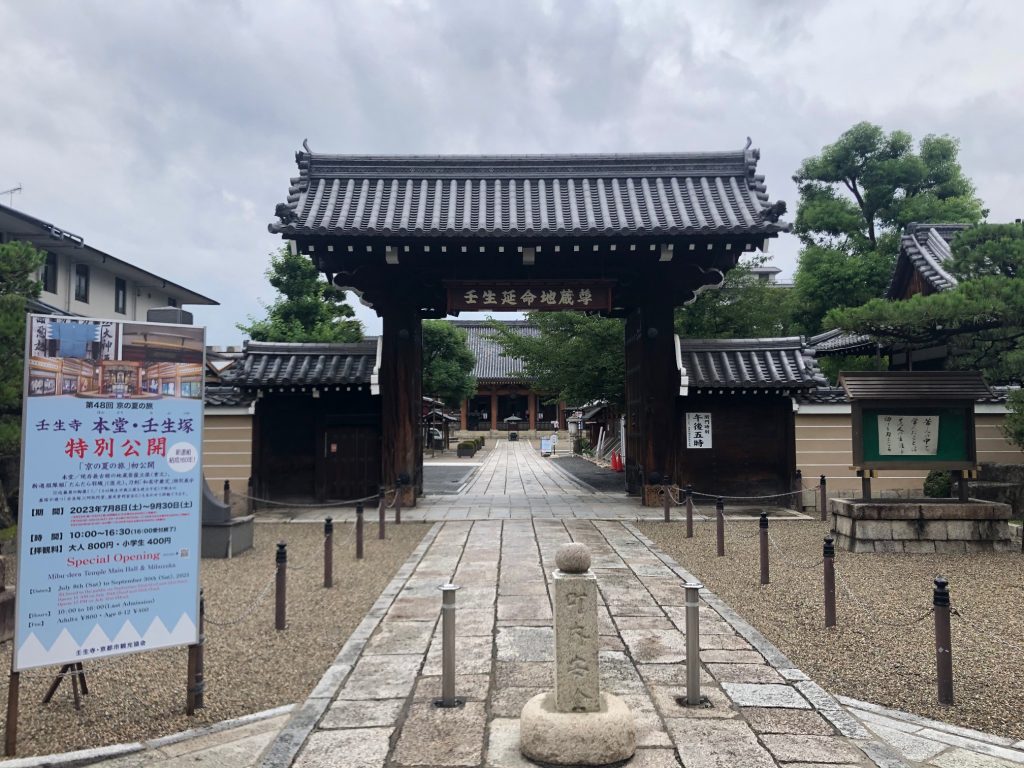
Mibu-dera, the head temple of the Ritsu sect, is renowned as a temple associated with the Shinsengumi, as it was used by them for training in artillery and martial arts. The island in the pond within the precincts is called "Mibu-zuka," where the graves of 11 Shinsengumi members are enshrined, including statues of Kondo Isami and Hijikata Toshizo, along with a hair-relic tower. Mibu-dera is also famous for the silent play "Mibu-kyogen," and the basement of the Amida Hall exhibits materials related to the Shinsengumi and Mibu-kyogen.
Mibu-dera
31 Mibu Naginomiyacho, Nakagyo Ward, Kyoto
https://www.mibudera.com/
Yagike
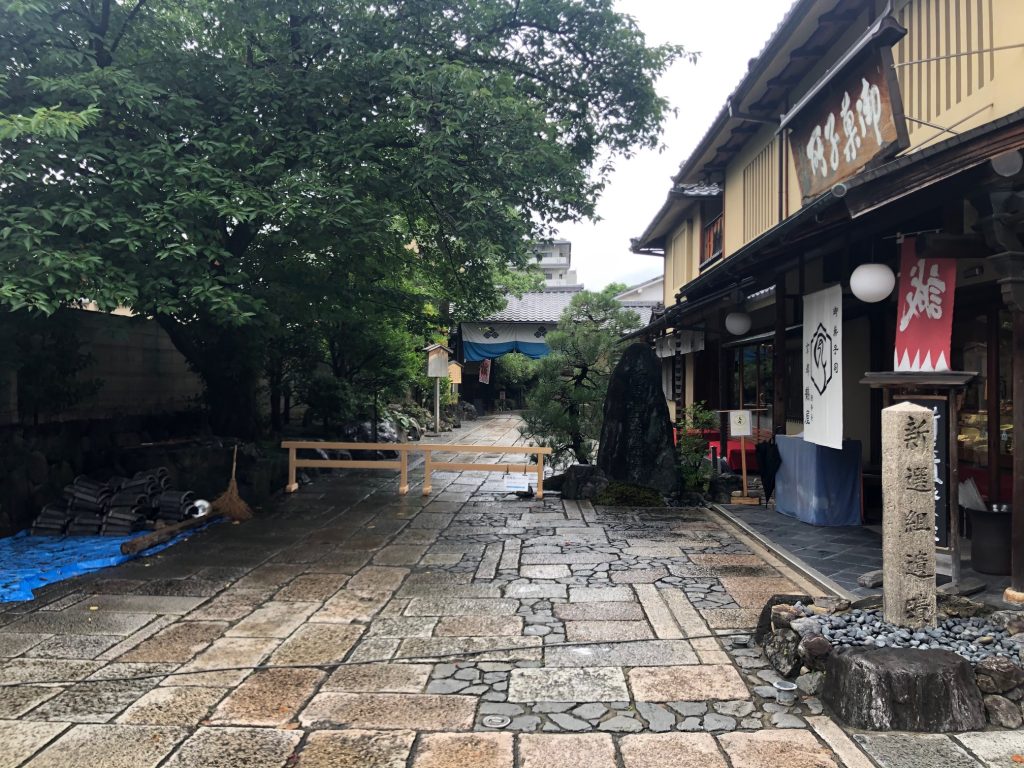
The Yagi family, a local samurai family in Mibu, used their residence as the barracks for the Shinsengumi, serving as lodging for both the group led by Serizawa Kamo and the group led by Kondo Isami. As a result, it is considered the "birthplace of the Shinsengumi."
This location is where Serizawa Kamo, the first head of the Shinsengumi, and his group were assassinated, and some of the sword wounds from that incident still remain. Designated as a tangible cultural property by the city of Kyoto, it is recognized as a historical building.
The descendants of the Yagi family continue to manage the property and operate a traditional Japanese confectionery shop called "Kyoto Tsuruya Tsujuan" on the premises. To visit the interior, arrangements must be made through Tsujuan (including guided tours, matcha tea, and making traditional mochi cakes).
Yagi Family Residence (Mibu Barracks Site)
24 Mibu Naginomiyacho, Nakagyo Ward, Kyoto
https://www.mibu-yagike.jp/
Former Maekawa Residence
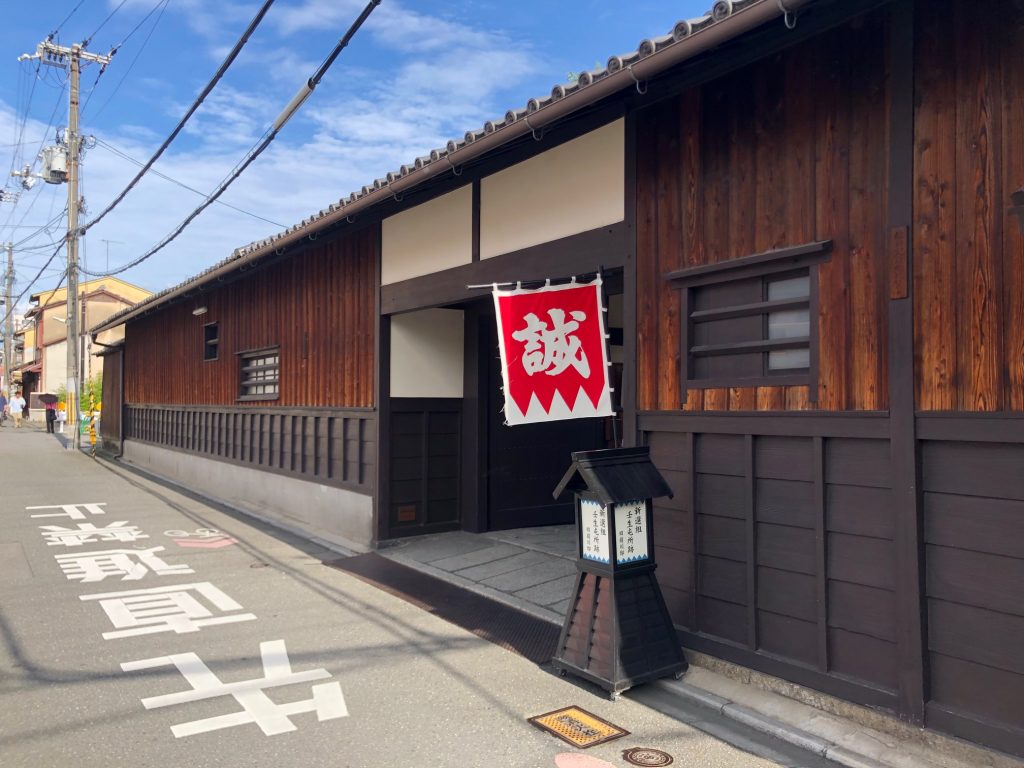
The Maekawa family, like the Yagi family, were also local samurai of Minami. Their residence was used as a lodging place for the Shinsengumi.
Currently, it has been converted into a private residence, and the interior is not open to the public.
The torture of Furutaka Shuntaro by Hijikata Toshizo, which triggered the Ikedaya Incident, took place in the eastern warehouse of the Maekawa residence. It was also the place where Yamana Kengosuke, who served as vice-chief and chief of the Shinsengumi, committed seppuku.
On Saturdays, Sundays, and holidays, Shinsengumi goods and original Maekawa residence goods are sold at the entrance.
Former Maekawa Residence
49 Mibu Kameyacho, Nakagyo-ku, Kyoto City
https://kyu-maekawatei.com/
Shintokuji
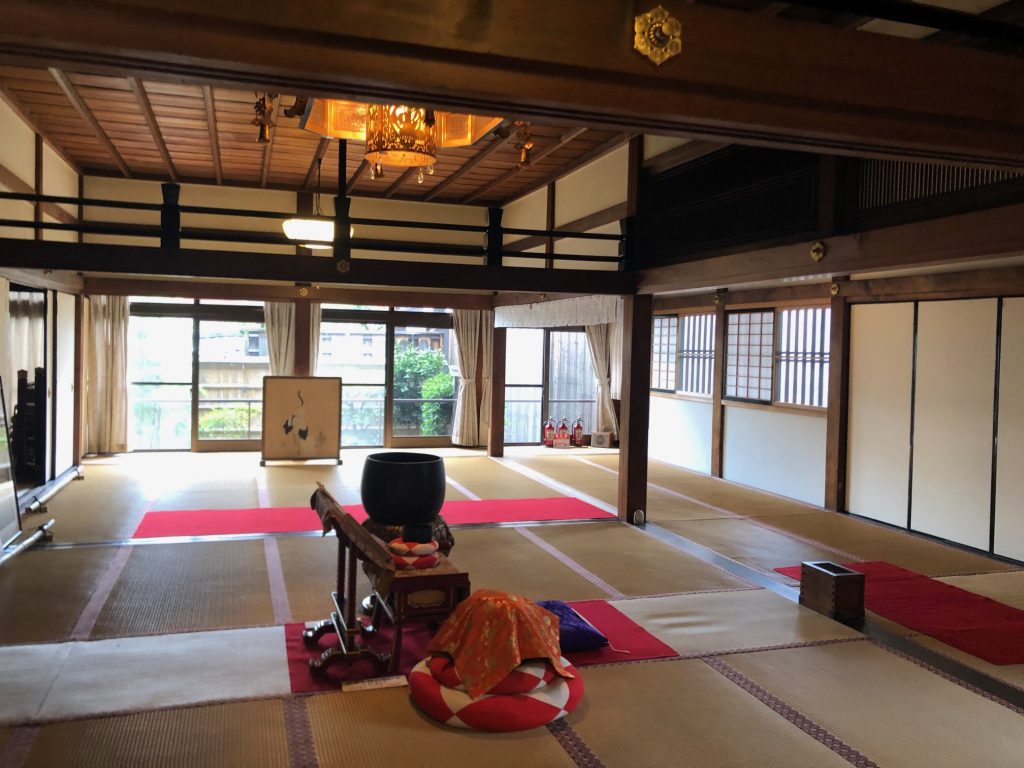
Shintoku-ji is a temple of the Rinzai Zen sect, Engaku-ji branch.
It was here that a speech advocating Sonno joi (revere the emperor, expel the barbarians) by Kiyokawa Hachiro, which led to the formation of the Mibu Roshigumi (later known as the Shinsengumi), took place after the splintering of the roshi group upon their arrival in Kyoto. Normally, it is not open to the public.
Shintoku-ji
48 Mibu Kameyacho, Nakagyo-ku, Kyoto City
Next, we'll continue with the history of Kyoto and Nakagyo Ward in the Bakumatsu period in Part 4.
References
"Shonen Shoujo Nihon no Rekishi" (Boys and Girls History of Japan), Shogakukan
"Ken Shi 26: Kyoto-fu no Rekishi" (Prefectural History 26: History of Kyoto Prefecture), Yamakawa Publishing
Oishi Manabu, "Shinsengumi 'Saigo no Bushi' Jitsuzo" (Shinsengumi: The True Image of the Last Samurai), Chuko Shinsho
Shiba Ryotaro, "Shiba Ryotaro no Nihonshi Tanken" (Ryotaro Shiba's Exploration of Japanese History), Kadokawa Bunko
Author Profile

- 大阪で生まれ育ち、SEやDTPデザイナー・オペレーターを経て、京都の某情報誌でいつのまにか編集・ライターになってました。読書と酒と犬をこよなく愛し、面白そうなことに首を突っ込みます。
Latest entries
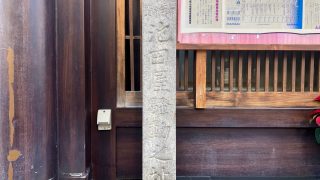 article2024-01-17Here are four locations associated with Yoshida Toshimaro and the "Ikedaya Incident," which brought fame to the Shinsengumi and delayed the Meiji Restoration.
article2024-01-17Here are four locations associated with Yoshida Toshimaro and the "Ikedaya Incident," which brought fame to the Shinsengumi and delayed the Meiji Restoration. trivia2023-12-15Kyoto and Nakagyo Ward History: "The August 18 Coup d'État ~ The Ikedaya Incident"
trivia2023-12-15Kyoto and Nakagyo Ward History: "The August 18 Coup d'État ~ The Ikedaya Incident"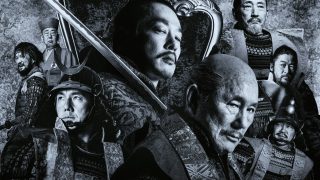 article2023-11-24"Kitano's World" depicts an unseen "Incident at Honnō-ji" Watching the movie "Kubi," we embark on a pilgrimage to Honnō-ji.
article2023-11-24"Kitano's World" depicts an unseen "Incident at Honnō-ji" Watching the movie "Kubi," we embark on a pilgrimage to Honnō-ji.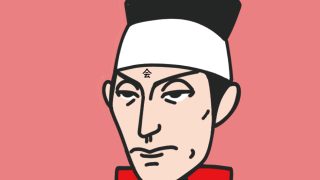 local2023-11-18The History of Kyoto and Nakagyo Ward: The End of the Edo Period Part 3 - "Birth of the Shinsengumi"
local2023-11-18The History of Kyoto and Nakagyo Ward: The End of the Edo Period Part 3 - "Birth of the Shinsengumi"
